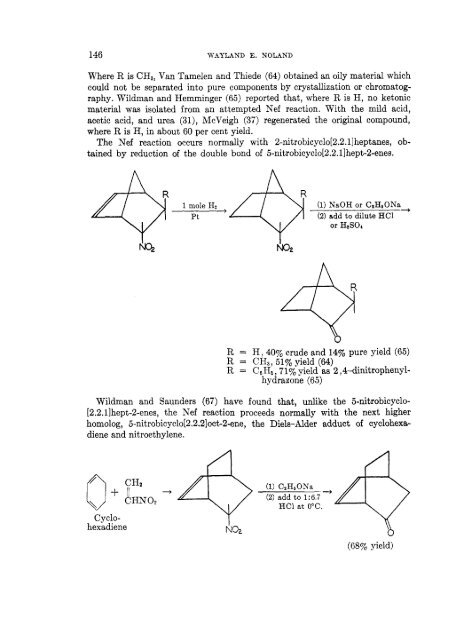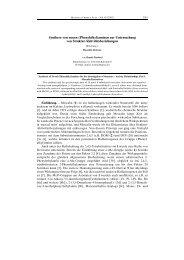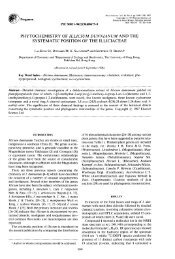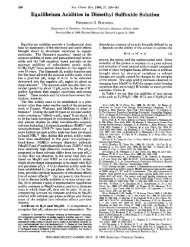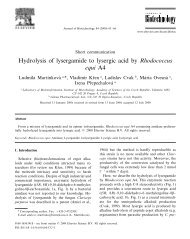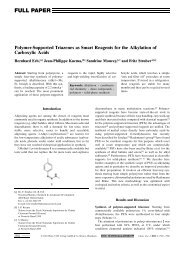Nef reaction
Nef reaction
Nef reaction
You also want an ePaper? Increase the reach of your titles
YUMPU automatically turns print PDFs into web optimized ePapers that Google loves.
146 WAYLAND E. NOLAND<br />
Where R is CH3, Van Tamelen and Thiede (64) obtained an oily material which<br />
could not be separated into pure components by crystallization or chromatog-<br />
raphy. Wildman and Hemminger (65) reported that, where R is H, no ketonic<br />
material was isolated from an attempted <strong>Nef</strong> <strong>reaction</strong>. With the mild acid,<br />
acetic acid, and urea (31), McVeigh (37) regenerated the original compound,<br />
where R is H, in about 60 per cent yield.<br />
The <strong>Nef</strong> <strong>reaction</strong> occurs normally with 2-nitrobicyclo[2.2.l]heptanes, ob-<br />
tained by reduction of the double bond of 5-nitrobicyclo[2.2.1lhept-2-enes.<br />
T I<br />
R = H, 40% crude and 14% pure yield (65)<br />
R = CH3, 51% yield (64)<br />
R = CeH6, 715% yield as 2 ,.l-dinitrophenylhydrazone<br />
(65)<br />
Wildman and Saunders (67) have found that, unlike the 5-nitrobicyclo-<br />
[2.2.l]hept-2-enes, the <strong>Nef</strong> <strong>reaction</strong> proceeds normally with the next higher<br />
homolog, 5-nitrobicyclo[2.2.2]oct-2-ene, the Diels-Alder adduct of cyclohexadiene<br />
and nitroethylene.<br />
(J+ CHN02 iH2<br />
Cyclo-<br />
hexadiene<br />
(1) C2H60Na<br />
-4<br />
(2) add to 1:6.i<br />
HC1 at 0°C.<br />
(68% yield)<br />
Na


